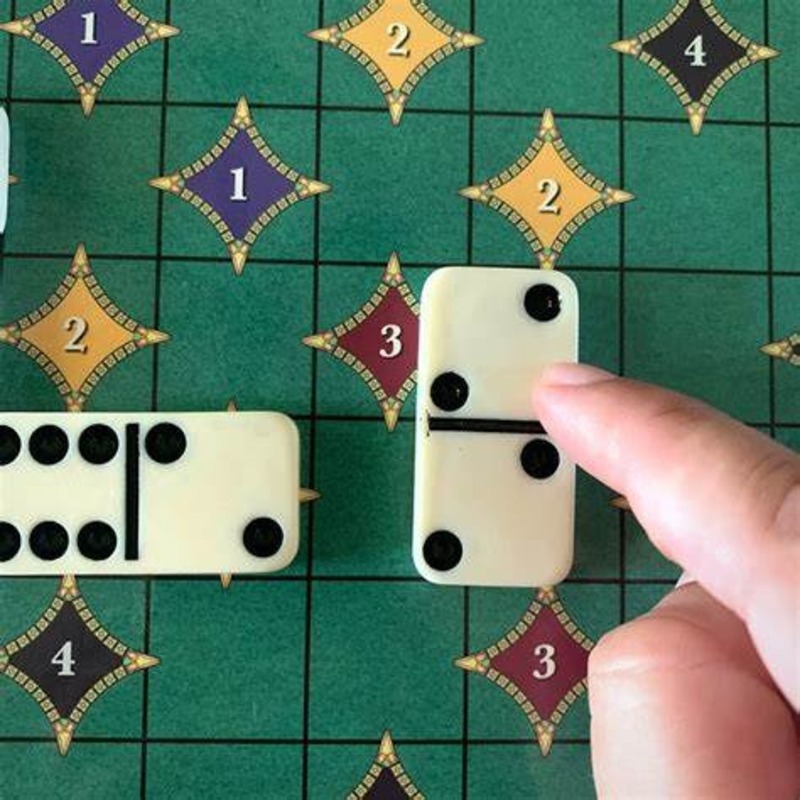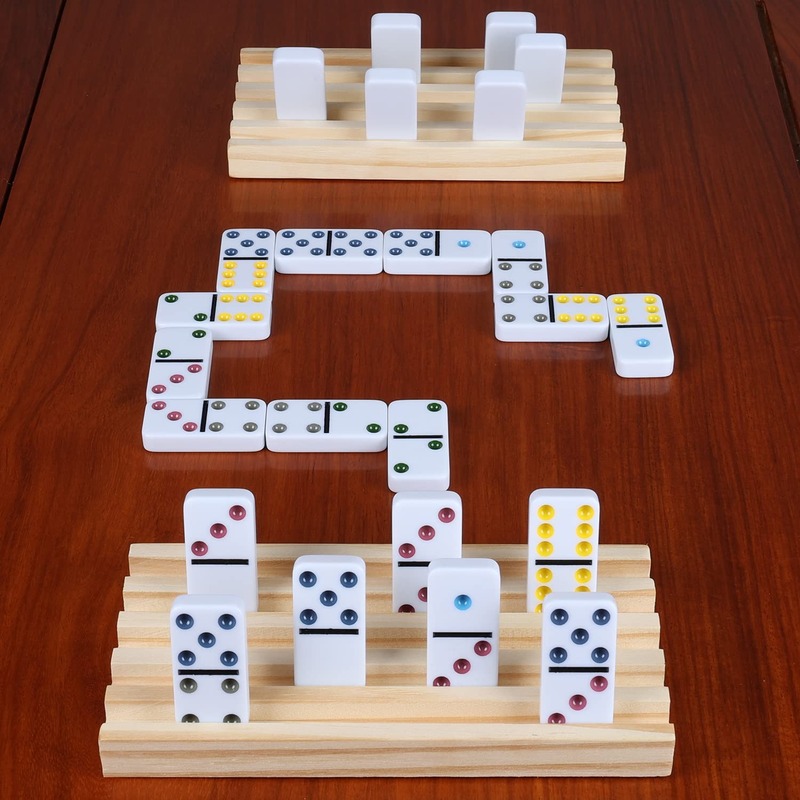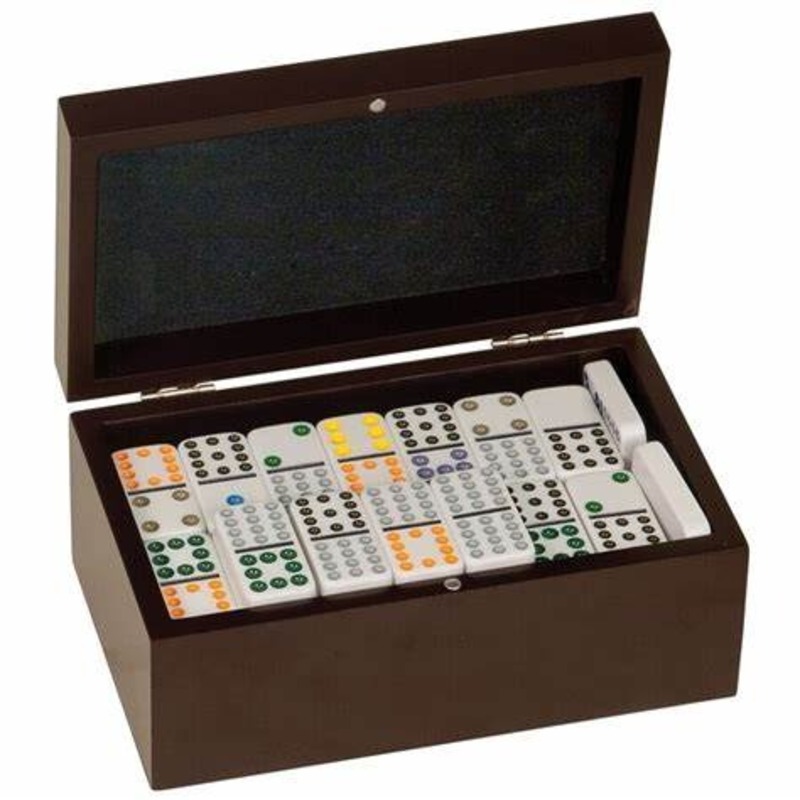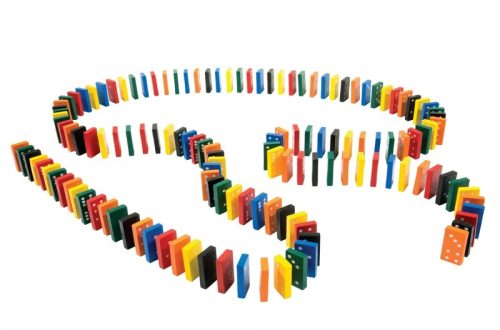Introduction to Dominoes
Dominoes is a classic game played around the world. Its history spans centuries, with origins traced back to ancient China. The game’s pervasive appeal lies in its simple rules and the strategic thinking it requires. Generally, it involves matching the numbers on the domino tiles to create a chain. The player who first empties their hand or scores the highest points wins, depending on the game variant.
This timeless game adapts to various player counts, making it versatile for both small and large gatherings. The essential question often asked is: ‘how many dominoes per person?’ The answer varies, depending on the domino set size and the game version being played. Whether in pairs or groups, distributing the tiles correctly ensures fair play and enhances enjoyment.
In social settings, dominoes promote interaction and friendly competition. It also serves as a mental workout, improving cognitive skills like problem-solving and arithmetic. The pleasure of the game is not just in winning but in the tactics used along the way.
Next, we will delve into the essential rules of dominoes, which establish the foundation for the various ways the game can unfold. Understanding these rules is key to enjoying the game to its fullest and ensuring that all players are on the same page.
Essential Dominoes Rules
To fully enjoy dominoes, players must grasp its core rules. First, shuffle the dominoes face down. This prevents any player from knowing the tile positions. Next, each player draws a set number of dominoes. The number drawn depends on the player count and the domino set. The remaining dominoes form the ‘boneyard’ and come into play later.
Starting the Game: The player with the highest double or chosen tile starts the game. They place the tile in the center of the table. Moving clockwise, each player must match one end of a domino in their hand to the open ends on the table. If a player can’t match, they draw one tile from the boneyard.
Game Objective: The main goal varies by game type. Generally, it’s to be the first to play all dominoes or to achieve the highest score. Scores are based on the pips (dots) on the remaining dominoes in the opponents’ hands. The lower the pips, the better.
Blocking Games: In blocking games, the aim is to empty one’s hand. If no player can move, the one with the lowest pip count wins that round. The game continues until a set score or number of rounds.
Scoring Games: Some variations award points during gameplay. Points can come from the board’s layout or remaining tiles. Knowing these basic rules is vital to figuring out ‘how many dominoes per person’ is fair and fun for everyone involved.

Domino Set Types and Sizes
Dominoes come in various set types and sizes. Each set caters to specific player counts. The most common sets include the double-six, double-nine, double-twelve, double-fifteen, and double-eighteen. The number indicates the highest value of pips found on a single tile in the set.
Double-Six: Contains 28 pieces. Ideal for 2 to 4 players.
Double-Nine: Holds 55 tiles. It suits 4 to 6 players.
Double-Twelve: Features 91 dominoes. Designed for larger groups of 6 to 10.
Double-Fifteen: Comes with 136 tiles. Best for 10 to 12 players.
Double-Eighteen: The largest set, with 190 dominoes. Fits over 12 players.
The choice of set impacts how many dominoes per person you distribute. A larger set allows for more players or a longer game, while smaller sets provide a fast-paced experience. When asking ‘how many dominoes per person,’ consider the set size to ensure each player gets the right number of tiles. This keeps the game fair and engaging for everyone.
Standard Distribution for Different Player Counts
When configuring ‘how many dominoes per person,’ the number varies with different player counts. Standard distribution ensures each player has an adequate number of tiles to enjoy the game fully. Here’s a breakdown by common domino set types:
- 2-4 Players: In a game with 2-4 participants, using a double-six set, each player typically gets 7 dominoes. This setup is perfect for an intimate game night.
- 4-6 Players: With a double-nine set suited for 4-6 players, distribute around 9-12 dominoes per person. This allows for a dynamic game with more strategic play.
- 6-10 Players: For medium to large gatherings, a double-twelve set is appropriate. Hand out 11-15 dominoes each, balancing game length with engagement.
- 10-12 Players: A double-fifteen set, serving 10-12 people, means 13-17 dominoes for every player. This version can lead to lengthier and more intricate games.
- More than 12 Players: In very large groups, a double-eighteen set accommodates everyone. Assign 15-20 dominoes to each participant to keep the play manageable and fair.
Generally, with more players, the number of dominoes per person decreases to speed up the game. Remember, the actual distribution may also depend on the preferred style and rules of the specific domino game being played. Adhering to these general guidelines will help create an enjoyable gaming experience for all involved.

Variations in Dominoes Distribution
While the standard distribution offers a baseline, variations can spice up gameplay. Here’s how things can change:
- For Faster Games: Reduce the number of dominoes per person. It quickens the pace.
- For Longer Games: Increase the count. Each player has more options, extending the game.
- Custom Rules: Sometimes, rules alter the standard count. Tailoring distribution adds a unique twist.
- Tournament Play: Competitions may have specific guidelines for dominoes per person.
- Learning Players: Fewer tiles help newbies grasp the game without being overwhelmed.
- Expert Players: More tiles can challenge seasoned players with complex scenarios.
Remember, ‘how many dominoes per person’ isn’t set in stone. You can adjust to fit the occasion, player skill levels, or to experiment with new strategies.
Strategies for Even Distribution in Large Groups
When dealing with large groups, distributing dominoes evenly becomes a challenge. Here are strategies to ensure fairness:
- Count Carefully: Before starting, count out the exact number of dominoes per person. This prevents any miscalculation.
- Use Bigger Sets: Opt for double-twelve or double-eighteen sets for groups larger than 10. Bigger sets offer more tiles for distribution.
- Group Division: If necessary, divide the group into smaller tables. Each table then plays as a separate game.
- Assign a Dealer: Designate one person to handle distribution. This helps avoid any mixing up or miscounts of tiles.
- Keep a Reserve: Set aside a small number of dominoes. If there’s a dispute or mistake, you have extras to resolve it.
- Predefined Selection: To keep things moving swiftly, predefine how many dominoes per person. This speeds up the start of the game.
These strategies will help maintain a smooth flow of play and keep all participants engaged and happy.

Adjusting Rules for Different Set Sizes
When hosting a dominoes game, it’s important to adjust the rules based on set sizes. Different sets cater to varying numbers of players. Here are some adjustments you can consider:
- Double-Six Set: Typically for 2-4 players, each gets 7 tiles. For a faster game, reduce to 5 tiles each.
- Double-Nine Set: Suited for 4-6 players, distributing 9-12 tiles per person. For a challenge, try 7 tiles each.
- Double-Twelve Set: A good fit for 6-10 players. Usually, 11-15 tiles per player are allocated. You might drop it to 9 for quicker turnaround.
- Double-Fifteen Set: Designed for 10-12 participants. Each normally receives 13-17 dominoes. With fewer tiles, players can finish quicker.
- Double-Eighteen Set: The largest set, for over 12 players. Hand out 15-20 tiles each. For variety, consider 10 tiles per player for short sessions.
Making these rule changes can fine-tune the game’s length and difficulty. How many dominoes per person isn’t rigid. It adjusts to player preferences and occasion. This flexibility ensures everyone has a fun and engaging game experience. Keep player skill levels in mind when modifying these rules, and aim for a balance between challenge and enjoyment.
Conclusion: Tips for Optimized Gameplay
In a riveting game of dominoes, knowing ‘how many dominoes per person’ is crucial for fun and fair play. As we’ve navigated the various set sizes and rules, here are final tips to optimize your dominoes experience:
- Choose the Right Set: Match the domino set to your player count for balanced gameplay.
- Adjust as Needed: Don’t be afraid to tweak tile distribution for the game’s pace or player skill level.
- Clear Rules: Before you start, make sure everyone understands the rules and any custom changes.
- Fair Distribution: Count dominoes carefully to ensure each player starts on equal footing.
- Respect all Players: Accommodate both new and experienced players by adjusting complexity.
- Keep it Moving: Predefine the number of dominoes per person to start the game quickly.
- Have Extras Ready: Keep a few spare dominoes to resolve any accidental miscounts.
- Enjoy the Game: Remember, the goal is to have fun, whether it be in a competitive or casual setting.
By following these guidelines, your dominoes game can run smoothly and be enjoyed by players of all skill levels. Distribute the dominoes fairly, adjust the rules when necessary, and most importantly, have a great time!





